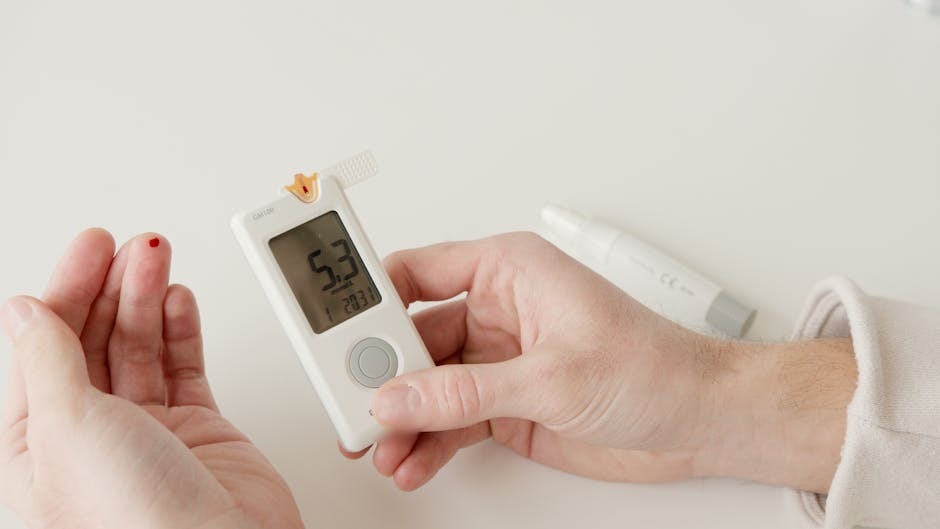Meal Plan for Diabetics

Diabetes impacts most areas of your health and wellness unless you manage it successfully through diet and lifestyle choices.
LifeSpring Home Nutrition offers an easy way to create a healthy meal plan for diabetics.
Understanding a Meal Plan for Diabetics
As a diabetic, your meal plan should include a balance of carbohydrates, protein, and fats to stabilize your blood sugar levels.
According to the Centers for Disease Control and Prevention (CDC), “How fast carbs raise your blood sugar depends on what the food is and what you eat with it.” LifeSpring Home Nutrition offers diabetic-friendly meals to help you create a balanced meal plan.
What Is a Diabetes Meal Plan and Why Is It Important?
You can manage blood sugar levels by planning the following:
- What to eat
- When to eat
- How much to eat
Monitoring your blood sugar levels allows you to prevent complications. You can work with your healthcare provider or other healthcare experts to create a diabetic plan that fits your circumstances and needs. The American Diabetes Association encourages planning meals to reduce health risks and improve overall wellness.
How Does Healthy Eating Help Manage Blood Sugar Levels?
You can manage your blood sugar levels by doing the following:
- Eating fiber-rich foods, such as veggies like green beans, whole-wheat, and other healthy foods
- Pairing carbohydrates and low-sodium foods with healthy fats to improve digestion
- Eating lean protein and lean meats instead of highly processed meats
- Limiting added sugars to reduce the risk of a spike in blood sugar levels
LifeSpring Home Nutrition also offers dietary education and information about community-based programs or services that will help you manage your conditions.
Who Can Help Me Create a Personalized Meal Plan?
Many medical professionals can help you create a personalized meal plan, including:
- Registered dietitians (RDs)
- Nutritionists
- Primary care doctors
You may receive a referral from your primary care doctor to see a specialist if you have co-occurring health conditions impacting your blood sugar levels.
Key Principles of a Diabetes Meal Plan
The key principles of diabetes meal plans include:
- Choosing complex carbs and high-fiber foods
- Limiting sugary foods, drinks, and added sugars
- Counting carbohydrate grams per meal
- Taking into consideration the glycemic index (GI)
Carbohydrates play a critical role in blood glucose control. LifeSpring Home Nutrition can help you by providing medically tailored meals (MTMs).
How Do Portion Sizes and the Plate Method Work?
People use the portion sizes and the plate method to better visualize their meals and develop a healthier diet.
The plate method involves using a dinner plate divided into different sections for each food group. Portion control and the plate methods promote more nutritious meals and a healthy serving size for each food group.
Which Food Groups Should Be Prioritized for Diabetes-Friendly Eating?
The foods you should prioritize for diabetes-friendly eating include:
- Non-starchy vegetables
- Lean proteins
- High-fiber carbohydrates
- Healthy fats
LifeSpring Home Nutrition offers various meals with these important types of foods. You can enjoy a wide range of delicious, diabetes-friendly foods delivered straight to your door each week.
Carbohydrate Choices and Carb Counting
By counting carbs and incorporating unprocessed foods into your diet, you can manage your blood sugar levels more effectively.
Some foods that provide healthy carbohydrates include all-natural peanut butter and sweet potato dishes. Healthy carbohydrates can make it easier to eliminate processed foods like white bread and fruit juice with added sugars.
How Do I Count Carbs for Better Blood Sugar Management?
You count carbs by looking at the number of grams of carbohydrates in each serving and then multiplying that by the number of servings you eat.
For example, a can of soup may have 30 total grams of carbohydrates. According to the CDC, “For diabetes meal planning, 1 carb serving is about 15 grams of carbs.” Using these measurements, a can of soup will be two servings of carbs.
Which Whole Grains Are Best for People With Diabetes?
Some of the best whole grains for a healthy diabetes diet include:
- Quinoa
- Oats
- Brown rice
- Mullet
- Buckwheat
- Rye
LifeSpring Home Nutrition uses these whole grains in breakfast foods, ethnic dishes, and other meals.
Are Low-Carb Diets Safe and Effective for Type 2 Diabetes?
Yes, a low-carb diet is safe and effective if you have type 2 diabetes.
A low-carb diet enhances beta-cell function, reduces the need for medications, and improves weight management. You can work with your care team to create a diet that uses whole foods, low-carb, lean proteins, and other healthy foods to improve your condition.
Protein and Healthy Fats in a Diabetes Diet
You can use lean protein sources to create healthy meals that reduce the risk of health issues.
Poultry, eggs, beans, nuts, tofu, and seafood can introduce lean proteins into your diabetes diet.
How Can Healthy Fats Like Olive Oil Support Blood Pressure and Cholesterol?
Monounsaturated fats and antioxidants reduce “bad” cholesterol that can increase your risk of heart disease and other conditions.
Healthy fats like olive oil and omega-3 fatty acids also lower blood pressure by relaxing blood vessels. LifeSpring Home Nutrition uses antioxidants and healthy fats to enrich foods and provide a balanced weekly meal plan.
Should I Limit Saturated Fat and Processed Foods?
You should limit or completely eliminate processed foods and saturated fats from your diet to improve your overall wellness.
Ultra-processed and processed foods can significantly reduce your quality of life by directly impacting your blood sugar levels.
Vegetables, Fruits, and Fiber
Fiber from fruits, vegetables, grains, and legumes boosts your health and provides a solid foundation for a healthy eating plan. Non-starchy vegetables help stabilize glucose levels.
How Much Fruit Can I Eat Without Spiking Blood Sugar?
You should limit fruit to tiny portions to avoid spiking blood sugar levels.
Consulting with your doctor or a dietitian is the best way to ensure you do not eat too much fruit in one sitting. Generally, a tennis ball-sized portion of fruit will help prevent sugar levels from spiking.
You can mix fruit with yogurt or other foods to reduce the risks. In addition, eating minimal amounts of fruit throughout the day can also ensure you get enough vitamins and minerals without causing a glucose spike.
What High-Fiber Foods Can Improve Blood Sugar Control?
Some high-fiber foods you can use to control your blood sugar include:
- Beans, peas, lentils, and other legumes
- Oats, barley, and other whole grains
- Leafy greens, broccoli, green beans, and other vegetables
- Berries, apples, pears, avocados, and other fruits
- Nuts
A high fiber diet has many potential health benefits and can reduce the risk of heart failure and cardiovascular disease.
Dairy, Beverages, and Added Sugars
Beverages often have added sugars that may potentially spike your blood sugar levels.
Understanding your limits and what type of drinks to eliminate from your diet can reduce your risk of health complications.
Which Low-Fat Dairy Options Are Diabetes-Friendly?
Some examples of low-fat dairy options you can safely eat or drink include:
- Skim or 1% dairy milk
- Fat-free or low-fat yogurt
- Low-fat cheeses, including mozzarella, ricotta, or parmesan
- Fat-free or low-fat cottage cheese
Diary must be eaten and drunk in moderation to avoid unhealthy side effects such as heart disease or unintentional weight gain.
Are Fruit Juices and Sweetened Drinks Safe in Moderation?
No, you should generally avoid fruit juice and sweetened drinks.
You should stay in the habit of avoiding drinks with added sweeteners, including fruit juices. Fruit juice, even in moderation, may cause unintentional weight gain and spikes in blood sugar levels.
How Can I Reduce Added Sugar Without Losing Flavor?
Adding natural flavor enhancers can maintain healthy, safety, and taste.
Some examples of natural flavor enhancers include the following:
- Vanilla
- Almond
- Cinnamon
- Nutmeg
- Fresh fruit
You should use all spices and other flavor enhancers in moderation. In addition, you can retrain your taste buds to enjoy drinks and foods with fewer flavor profiles.
Meal Planning Strategies
Meal planning strategies allow you to prepare for your week in advance, ensuring you always know what to expect from every meal.
A medical professional can help you develop a comprehensive meal plan that supports your overall health.
How Can I Plan Balanced Meals for the Week?
You can use a meal delivery service to easily and conveniently plan balanced meals for the week.
LifeSpring Home Nutrition delivers frozen meals once a week to ensure clients have access to nutrient-rich foods that meet their special dietary requirements.
What Is the Glycemic Index and Why Does It Matter?
The glycemic index is a scale from 0 to 100 that you can use to determine how quickly specific foods raise glucose levels.
According to MedlinePlus, “Only foods that contain carbohydrates have a GI.” In addition, “If you have diabetes, high GI foods can make it harder to control your blood sugar.”
How Do I Adjust Meals for Prediabetes or Kidney Disease?
If you have kidney disease and prediabetes, you should work with your doctor or a nutritional expert to create a diet plan that limits certain minerals and proteins.
A tailored diet allows you to balance your glucose and avoid experiencing significant fluctuations in blood sugar levels. Meals from LifeSpring Home Nutrition promote a balanced diet and accommodate tailored meal plans.
Sample Meal Ideas for Blood Sugar Management
Some examples of diabetes-friendly breakfast, lunch, and dinner ideas include:
- Breakfast: Greek yogurt parfait, chia seed pudding, vegetable omelette, or oatmeal
- Lunch: Mediterranean turkey wrap, tuna salad and crackers, hummus and pita bread, or quinoa salad,
- Dinner: Spaghetti squash, white chicken chili, or sheet-pan fatty fish with vegetables
You can also incorporate healthy snacks like hummus, lentils, and chickpeas into your diet.
Dining Out and Special Occasions
Dining out may cause anxiety or confusion if you have recently been diagnosed with diabetes or prediabetes.
In recent years, it has become more common for restaurants to put health information, including calorie counts and a full list of ingredients, on menus to help you make healthier dining choices.
How Do I Make Healthy Choices When Eating Out?
Getting a list of recommended foods for healthy eating remains one of the best ways to ensure you make the right meal choices, even when eating out.
Your care team can provide a list of everyday restaurant items and let you know what foods to avoid or order to maintain your specialized diet.
What Are Smart Swaps for Desserts and High-Carb Foods?
Generally, a “smart swap” involves replacing foods with high sugar contents or highly processed foods with nutrient-rich alternatives that have a lower risk of impacting your glucose levels.
Some examples of swapping deserts and high-carb foods include:
- Swapping home-made frozen yogurt or blended fruit for ice cream
- Replacing cookies or other pastries with whole-grain oatmeal cookies flavored with fruit
- Swapping white bread and pasta for whole-grain alternatives
- Using brown rice instead of white rice
- Replacing high-carb spreads with natural nut butters or avocado
If you have specific foods you feel uncertain about how to replace, speak with a nutritional expert for guidance.
How Can I Stick to My Eating Plan During Holidays or Events?
Plan ahead and prepare to have alternative, diabetes-friendly foods available for you to eat.
You may find it hard to avoid your favorite comfort foods or traditional family foods during holidays and events throughout the year. However, even indulging for one meal can cause a cascade effect of blood sugar spikes and crashes.
Do not skip meals in preparation for eating a large amount at holiday or event meals. Bring healthy foods or arrange for diabetic foods to be available at events. Set realistic expectations for your ability to control your eating and carefully monitor your glucose levels to ensure you respond quickly to any unusual changes.
Working With Your Care Team
Anyone with diabetes should have a team of medical professionals to help them manage and monitor their condition.
You can work with a care team to ensure you have the resources and tools to successfully maintain healthy blood sugar levels.
How Can a Registered Dietitian or Diabetes Educator Support Me?
In addition to providing important education about diabetes management, RDs and diabetes educators also do the following:
- Create personalized meal plans
- Provide referrals and information on community-based resources
- Offering strategies for weight management
- Reducing the risk of diabetes complications
- Improving overall health
Your healthcare provider can also help you create a meal plan that aligns with your health goals, lifestyle, and medical needs.
How Often Should My Eating Plan Be Reviewed and Adjusted?
How often you should review and adjust your eating plan will depend on the severity of symptoms, the specific condition you have, and any health complications you might experience.
You might want to consult with a registered dietitian or other expert on your care team if you experience the following:
- Major life changes
- Lifestyle changes
- Hormonal shifts
- New symptoms or co-occurring health issues
- Medication changes
- Serious illness or injury
- Significant weight changes
If you recently received a diagnosis of diabetes, you may benefit from frequent check-ins with your care provider. Most people with a new diagnosis meet with their doctor every three to six weeks to adjust their diet and medications as necessary.
Frequently Asked Questions About a Meal Plan for Diabetics
Below are some frequently asked questions about diabetic meal plans.
Can a diabetes diet help with weight loss?
Your food choices, including using a diabetic-friendly diet, directly affect weight management.
The pre-portioned meals provided by LifeSpring Home Nutrition ensure you eat the recommended serving sizes for each meal. Eating whole foods, healthy fats, and less added sugar can reduce the risk of unintended weight gain and promote healthy weight loss.
Are supplements necessary for managing blood sugar?
No, you do not have to take supplements to manage blood sugar.
Eating foods that contain essential vitamins and minerals will help you manage your blood sugar levels better than supplements. If you believe you may benefit from supplements like vitamin B12 or magnesium, you can discuss your options with a medical professional.
What should I do if my glucose levels stay high despite healthy eating?
If your sugar levels stay high despite a healthy diet, you might need to consult your care team about adjusting medications or making lifestyle changes.
You may benefit from a holistic approach to diabetes management that involves regular physical activity, medication monitoring, and meal planning.
A balanced and nutritional diet plays a critical role in managing diabetes. LifeSpring Home Nutrition offers multiple diabetes-friendly meals. To learn more about our meal delivery services and how to receive weekly deliveries at your home, call our office today at (800) 798-5767.
 Call To Order
Call To Order


















